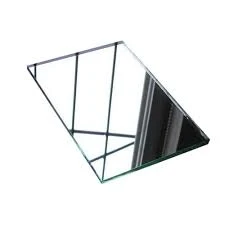

The Versatility and Benefits of Tinted Mirror Glass
Tinted mirror glass has emerged as a popular choice in modern architecture and interior design, offering a unique blend of practicality and aesthetics. Its dual functionality as both a mirror and a tinted glass allows for creative uses in a variety of applications, ranging from residential buildings to commercial spaces.
One of the primary benefits of tinted mirror glass is its ability to enhance privacy without sacrificing natural light. In environments where visibility from outside needs to be minimized, tinted mirror glass provides an effective solution. For instance, in offices or homes situated in crowded urban areas, tinted mirror glass can be installed in windows to prevent onlookers from seeing inside while still allowing occupants to enjoy a view of the outdoors. This feature is particularly valuable in high-density living situations, as it fosters a sense of security and comfort.
In addition to privacy, tinted mirror glass contributes to energy efficiency. By reflecting solar heat and reducing glare, it helps maintain a consistent indoor climate. This can lead to lower energy costs, as less reliance on air conditioning is needed during hot weather. Additionally, tinted mirror glass can filter harmful UV rays, protecting both the occupants and interior furnishings from potential damage caused by sun exposure.

Aesthetically, tinted mirror glass offers a sleek and modern look that can elevate the design of any space. Its reflective surface adds depth and sophistication, making it a favored choice for contemporary architectural designs. From high-rise buildings with facades made entirely of tinted mirror glass to interior spaces like dressing rooms and bathrooms, the glass can create a striking visual impact. It can also be utilized in decorative features such as wall panels, furniture accents, and even art installations, allowing for a limitless range of creative possibilities.
Furthermore, tinted mirror glass is highly durable and requires minimal maintenance. Unlike traditional glass mirrors, which can be prone to scratches or tarnishing, tinted mirror glass retains its appearance over time. This durability makes it an excellent choice for high-traffic areas, ensuring that it remains functional and visually appealing for years to come.
Additionally, advancements in technology have led to the development of various tints and finishes, allowing designers and architects to choose products that best fit their vision and the specific needs of their projects. This customization ensures that tinted mirror glass can be seamlessly integrated into diverse design styles, from minimalist and industrial to luxurious and ornate.
In conclusion, tinted mirror glass stands out as a versatile and functional material in contemporary design. Its ability to enhance privacy, improve energy efficiency, and add aesthetic appeal makes it an ideal choice for a wide range of applications. As architects and designers continue to innovate, tinted mirror glass will undoubtedly play a crucial role in shaping the future of building and interior design, marrying style and functionality in a remarkable way.